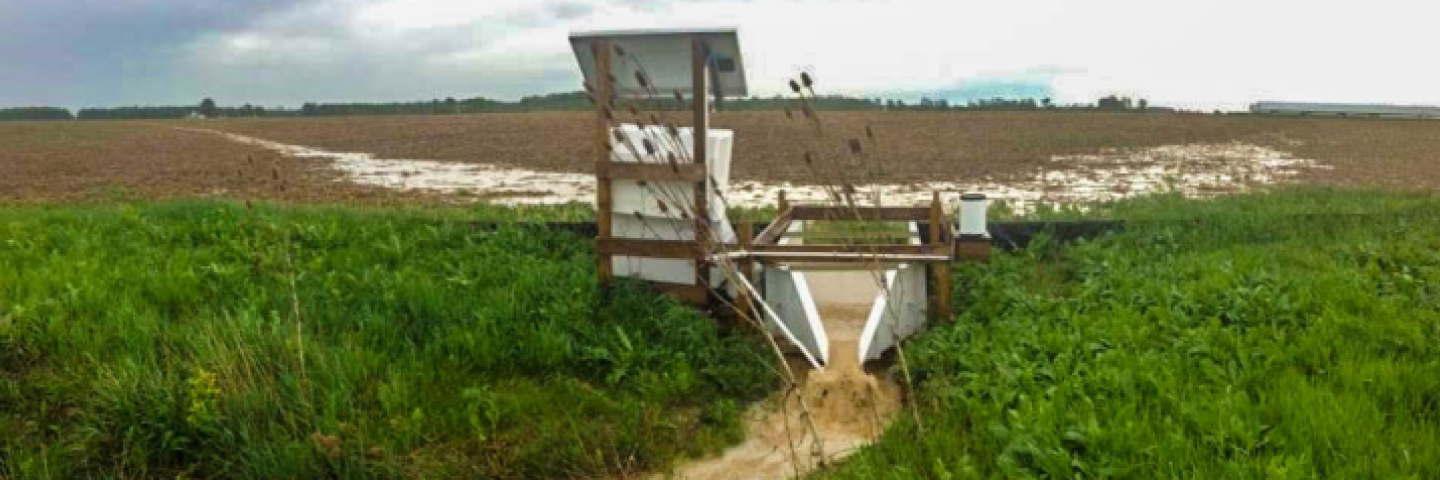
NRCS uses Edge of Field Monitoring of runoff water quality as one way to help landowners assess the effectiveness and management of their conservation practices to improve identified resource concerns.
Evaluation of conservation practice effectiveness through Edge of Field monitoring will lead to a better understanding of how well our conservation practices address water quality resource concerns. It will also assist NRCS and the participant in adapting and/or validating the application of conservation practices on working lands.
NRCS has two Conservation Evaluation and Monitoring Activity (CEMA) standards for Edge of Field Monitoring:
- 201 – Edge of Field Monitoring: Data Collection and Evaluation
- 202 – Edge of Field Monitoring: System Installation
Under NRCS’s Edge of Field Monitoring CEMA 201, monitoring can be conducted in one of two ways, continuous monitoring or discrete sampling, also known as grab sampling.
To learn more about CEMAs 201 and 202, see the link in the Resources below.
Landowners are required to work with a Qualified Individual (QI) to conduct Edge of Field Monitoring. A QI for this CEMA meets all the qualifications listed below:
- Has demonstrated successful management of at least two relevant edge-of-field water quality monitoring projects that acquired flow, precipitation, and water quality sample data collection – including operation and maintenance of the monitoring system(s).
- Demonstrated proper sample collection and preservation and oversight of the laboratory analysis.
- Completed statistical analysis of the data collected.
- Has documented prior system installation and is prepared to provide a copy of a previous installation report, including photographs, with personally identifiable information redacted.
Non-qualified individuals are allowed to collect data under the guidance and oversight of a QI.
Edge of Field Monitoring Resources
- CEMA 201 & 202 : EQIP CPAs, DIAs, and CEMAs
-
Edge of Field Monitoring: Overview (674.09 KB)
- Edge of Field Monitoring: Sampling Options and Data Collection
- ARS Factsheet for Blanchard River Demonstration Farms, OH
- Farmers Can Measure Conservation Effects with Edge-of-field Monitoring
- Ask the Expert: Q&A on Voluntary Edge-of-Field Water Quality Monitoring
- SMART Nutrient Management

